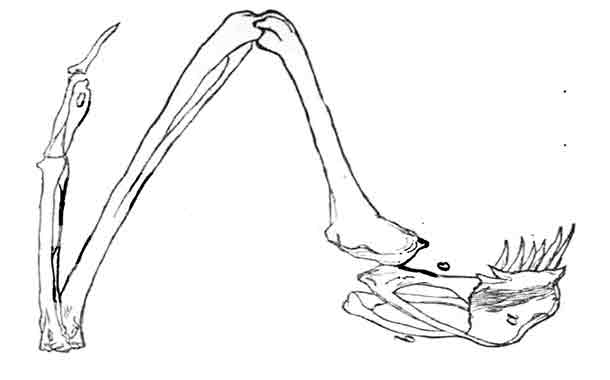<![CDATA[This year has been a remarkable one in palaeontology, as more evidence coming from eastern Asia and other places around the world has cemented the view that today's birds did indeed evolve from dinosaurs. Scientists have been studying the evolutionary tree of birds for decades, and now a new study published in the online open source scientific journal, PLOS Biology, has shown how the arms of dinosaurs may have evolved into the wings birds have today. Dinosaurs had wrists, and it has been long debated how these wrists evolved from being straight into the bent shape that allows birds to fold their wings against their bodies when not flying. The study was conducted by Alexander Vargas, researcher at the University of Chile, who examined fossils from several museums while collecting developmental data from seven species of birds, to study specific proteins in embryonic skeletons. Helping him do this section of the experiment was Joao Botelho, a Brazilian student who works in Vargas' lab and developed a new method to study the developing birds. The student-teacher team then combined the data from the embryos and the fossils to elucidate how the bird wrist evolved from the reptilian wrist. For a long time there was a huge debate among scientists about dinosaur wrist bones and bird wrist bones. One of the reasons for this was because palaeontologists and developmental biologists had different names for most of these bones. Also, many of the scientists disagreed on the notion that there was any correlation between the bones of birds and those of dinosaurs. Palaeontology and developmental biology are radically different disciplines, and there had not been any communication between the two fields on the subject. Vargas's study broke that mould. He looked to see which of the wrist bones became vestigial in dinosaurs and eventually withered away into oblivion, and which ones became bird wrist bones. Dinosaurs had nine wrist bones while birds have four. The debate over which bones became bird bones was first started in the 1970s by a Yale professor named John Ostrom, who first observed that the wrists of birds and the wrists of bird-like dinosaurs both possessed the semilunate - a half-moon shaped bone. Ostrom then stated that this bone in birds must have come from the merging of two bones in the wrists of dinosaurs. This sparked a heated debate, which Ostrom and his supporters did not win. Now, years later, Vargas and his team are showing that the semilunate could very well have formed from the joining of two bones in the wrists of dinosaurs. They have also found another bone, the pisiform, which is important in the way a bird flies. The pisiform is absent in bird-like dinosaurs, but the bone is seen to appear in the evolution of the first birds. Vargas then identified the other two bones of the bird wrist, based on both of the fields studied. These bones were the ones most debated among developmental biologists and palaeontologists. This goes to show that future studies need to bring together these two fields, in order for us to fully understand evolutionary processes throughout history.]]>
Scientists Discover How Dinosaurs Evolved Wings
